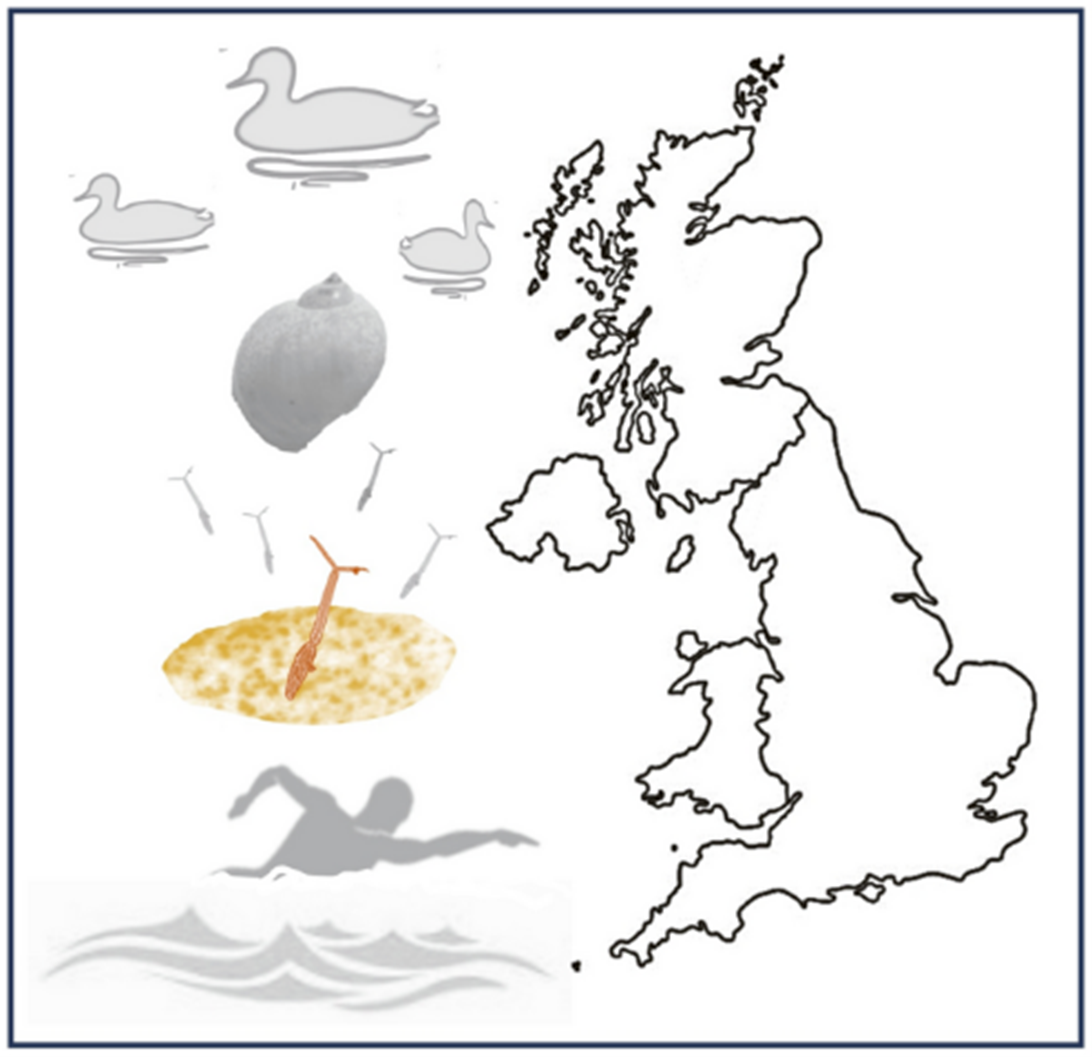
The Welsh poet W. H. Davies penned the famous lines “What is this life if, full of care, we have no time to stand and stare”, an eloquent poem on time-gone-by that nicely frames our article with doubled-edged advice.
We all agree that the information processing we conduct each day is increasing. This is growing ever faster to keep pace with receiving and filtering data coming at us from the surrounding electronic world. We need to slow down(!) and today’s mindful advice often recommends – relax, enjoy the countryside, perhaps go open water swimming to unwind.
Open water swimming is becoming very popular but what isn’t so obvious is the nuisance risk it may carry during summer months. As swimmers explore freshwater, they come into close contact with larvae of avian schistosomes lurking inside. Such larvae, if given opportunity, will happily penetrate skin but, unlike their schistosome cousins in Africa, these quickly die to give rise to “swimmer’s itch”, more correctly known as human cercarial dermatitis (HCD).
In certain parts of the world, HCD is a very severe nuisance, spoiling leisure time in freshwater. In the UK, on the one hand, it is surprising that no formal HCD reporting takes place, yet, on the other, several recreational lakes have had to close owing to swimmers’ complaint. Taking time “to stand and stare”, our article continues nicely on from pilot work at Knowsley Safari and involves student help.
Of note, Ms Orla Kerr was an intercalating medical student who took the BSc in Tropical Disease Biology. To close, our article encourages us to explore further the biodiversity of avian schistosomes across the world and reminds us how best to preserve the future leisure time of those wishing to relax and unwind in freshwater habitats in the UK.